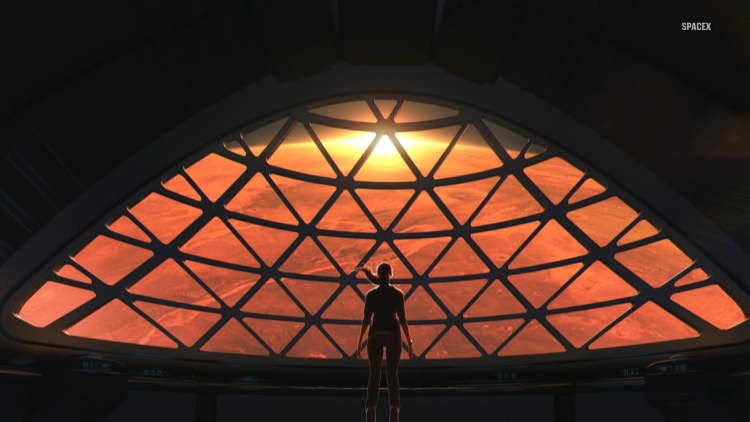In 2018, NASA hopes to put a robot spacecraft on Mars in an attempt to understand how the Red Planet, Earth and other rocky planets are born.
NASA has made about a dozen and a half successful voyages to Mars since the 1960s. However, the robot on this trip will be the first to have two particular technologies designed to understand what goes on under the surface of the planet, Sue Smrekar, the deputy principal investigator of the mission, dubbed "InSight," tells CNBC Make It.
"We have yet to look inside of Mars. We have only seen less than one percent of Mars," says Smrekar. "What we are going to do now is look under the hood. We are going to look at the rest of Mars, the other 99.9 percent that we have never seen before."
A hypersensitive seismometer, which measures tremors in the ground, and a heat flow probe, which measures the temperature, will travel to Mars on a lander (a stationary spacecraft robot, as opposed to a rover, which moves around the surface on wheels) and will give NASA new insight into how Mars was created, says Smrekar, who works at the Jet Propulsion Lab in Pasadena, Calif.
Similar instruments have been used on the Moon, but they were operated by astronauts. On Mars, a robot arm will operate the seismometer and heat flow probe without any humans.
Both tools being sent are of exceptionally high quality. The seismometer was developed and contributed by the French space agency Centre National d'Etudes Spatiales and the heat flow probe, which will stretch between three and five meters underground, is from the German Aerospace Center.
"Previous missions to Mars have investigated the surface history of the Red Planet by examining features like canyons, volcanoes, rocks and soil, but no one has attempted to investigate the planet's earliest evolution — its building blocks — which can only be found by looking far below the surface," NASA says of its mission to Mars in an overview statement.
"By studying the size, thickness, density and overall structure of the Red Planet's core, mantle and crust, as well as the rate at which heat escapes from the planet's interior, the InSight mission will provide glimpses into the evolutionary processes of all of the rocky planets in the inner solar system."
In particular, the mission will help NASA learn where there is ice and whether there is liquid water under the surface of Mars. The lander will also collect weather data for the surface of Mars too.
"I am sure that that information is going to be helpful for planning for future habitats for astronauts," says Smrekar.
The rocket that takes the lander to Mars is scheduled to depart from California on May 5 and is due to arrive on Mars on Nov. 26, the Monday after Thanksgiving. To bring the robot to Mars, a rocket launches from the Earth's orbit and a parachute lowers the spacecraft down onto the surface of the planet.
See also:
Billionaire Elon Musk's SpaceX launches a secret Air Force space drone
NASA shared pictures of the California wildfires from space — and the images are unreal

Like this story? Like CNBC Make It on Facebook


